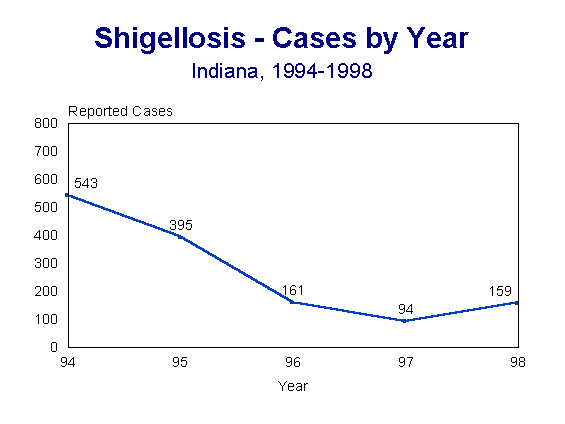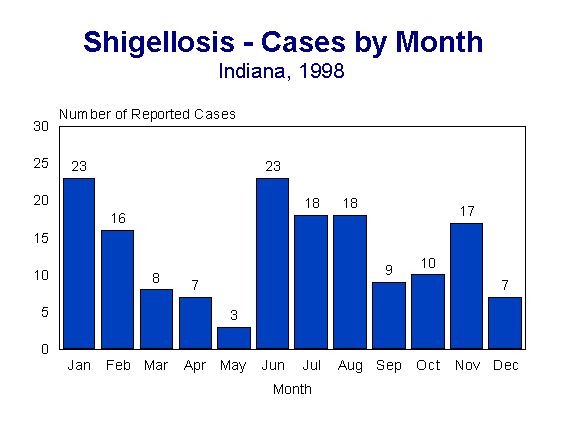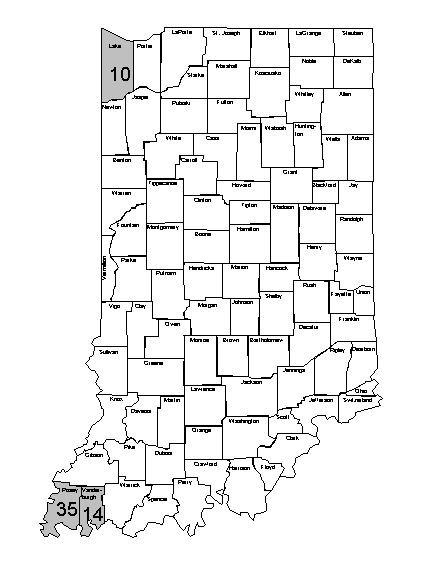
SHIGELLOSIS
Cases
= 159White = 1.5
Nonwhite = 5.3
Gender-specific rates
(per 100,000 population)Female = 2.8
Male = 2.4
Shigellosis is a bacterial disease usually transmitted from person-to person through hands
contaminated with feces. It can also be transmitted through food and water contaminated
with human feces, or oral-anal sexual practices. Shigellosis is highly communicable as
only 10-100 organisms must be ingested to establish an infection.
Following several years of steady decline, 159 cases of shigellosis were reported in Indiana in 1998, representing a 70% increase from the previous year (Figure 1).
Figure 1.

There are four Shigella species, all of which infect only humans. The serotype was determined for 122 (77%) of the 159 reported shigellosis cases. Shigella sonnei accounted for 107 cases (88%), 13 were S. flexneri (11%), and the remaining 2 (1%) were S. dysenteriae.
Incidence of shigellosis followed a bimodal distribution with most cases occurring during the summer and winter months (Figure 2).
Figure 2.

There was little difference in the incidence rate for males (2.4) and females (2.4). The age-adjusted rate of shigellosis was 3.5 times greater for nonwhites (5.3) than whites (1.5).
Age-specific rates were highest among children aged one to four years (10.1), followed by children aged five to nine years (5.6) (Figure 3). These high age-specific rates of shigellosis among preschool-aged and elementary school aged children represent the increasing problem of shigellosis outbreaks in day care centers and certain segments of elementary schools, primarily up through first graders.
Figure 3.

Among counties with at least 5 reported cases, crude incidence rates of salmonellosis were greatest in Posey (34.7), Vanderburgh (13.9), and Lake (9.7) Counties (Figure 4).
Figure 4. Shigellosis Incidence Rate by County
(among counties with > 5 reported cases)
Indiana, 1998

[an error occurred while processing this directive]